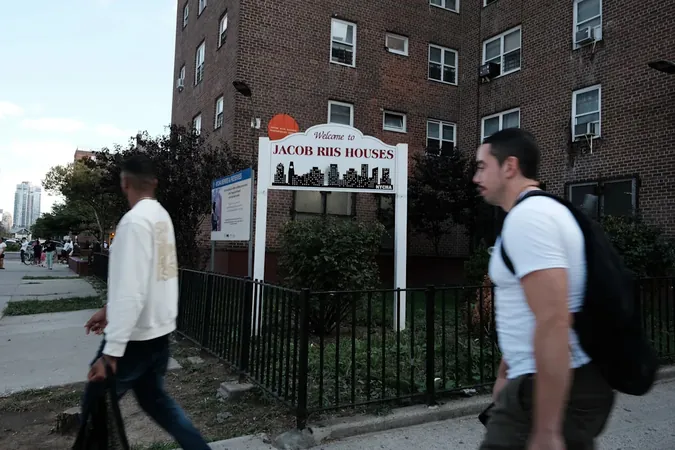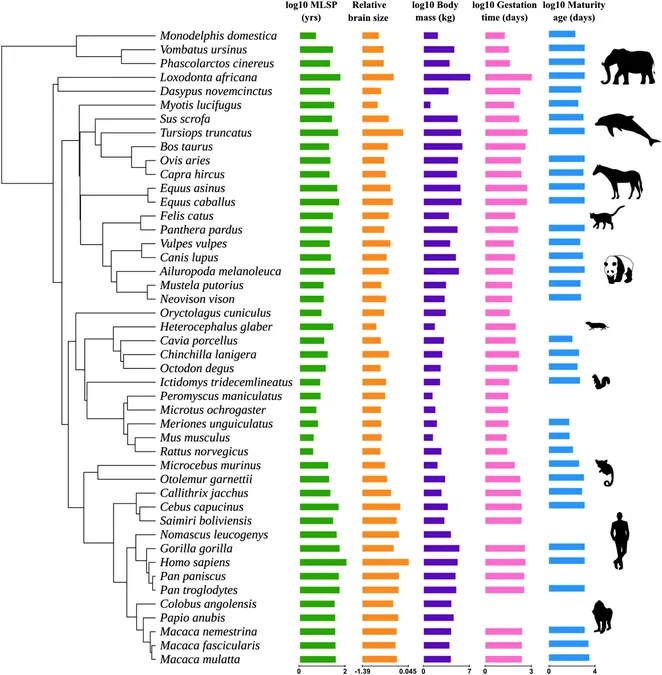
A Perfect Storm: Legionnaires' Disease Outbreak Hits New York City
2025-08-22
Author: Emily
The Alarming Surge of Legionnaires' Disease
New York City is battling its largest outbreak of Legionnaires' disease in recent years, with over 108 reported cases and at least five fatalities. This alarming situation has pushed health officials into crisis mode, as they scramble to curtail the spread of the disease. But experts warn that what’s happening in NYC is just a symptom of a larger issue affecting urban areas across the U.S. and beyond.
The Origins and Spread of Legionnaires' Disease
Legionnaires' disease, a severe form of pneumonia caused by the Legionella bacteria, thrives in warm water systems and is transmitted through mist that people inhale. This summer, officials traced the outbreak back to cooling towers in New York, which are essential for regulating temperatures in large buildings. During August storms, rainwater pooled in these towers, creating a prime breeding ground for the bacteria.
Legal Action and Accountability
In a significant move, attorney Ben Crump and Rev. Al Sharpton have initiated a lawsuit against a construction company after workers fell ill while working in Central Harlem. Local authorities have linked the outbreak to inadequately maintained cooling towers, with large rainfall events exacerbating the situation. Crump stated, "This outbreak was not a natural disaster. It was the direct result of negligence. When corporate interests overshadow public safety, lives are put at risk."
The Climate Connection
As the world warms, climate change creates more favorable conditions for diseases like Legionnaires'. Increased humidity and rising temperatures mean that areas previously unaffected are now at risk. This has prompted a need for cooling systems in regions that historically did not rely on them, such as the Pacific Northwest, where recent heat waves resulted in tragic fatalities.
Health Disparities Raise Alarm
Communities like Central Harlem face additional challenges that increase vulnerability to Legionnaires' disease. Many residents here, often from lower socioeconomic backgrounds, lack access to healthcare and support systems, resulting in higher rates of chronic illnesses, which can complicate recovery from infections. A recent case in Brooklyn highlighted this issue when a resident died after contracting Legionnaires'.
Prevention and Public Health Measures
Experts urge proactive health measures for vulnerable populations. Dr. Michael Phillips from NYU Langone Health advises individuals to stay informed about vaccines and to seek medical attention for respiratory symptoms. He emphasizes that maintaining some chlorine levels in water systems is crucial, as it can inhibit Legionella growth.
A Call for Better Governance and Trust in Public Health
The current outbreak underscores the need for transparent public health communication and efficient management of water systems. Iziah Thompson, a housing analyst, notes that a lack of clarity from various agencies has led to public distrust, making it hard for residents to feel secure in their safety. As the climate shifts and communicable diseases adapt, it is more important than ever for health departments to communicate effectively and efficiently.
In summary, the Legionnaires' outbreak is not merely a localized issue but a reflection of broader public health challenges influenced by climate change, infrastructure neglect, and socioeconomic disparities. Addressing these risks is imperative to safeguard communities moving forward.









 Brasil (PT)
Brasil (PT)
 Canada (EN)
Canada (EN)
 Chile (ES)
Chile (ES)
 Česko (CS)
Česko (CS)
 대한민국 (KO)
대한민국 (KO)
 España (ES)
España (ES)
 France (FR)
France (FR)
 Hong Kong (EN)
Hong Kong (EN)
 Italia (IT)
Italia (IT)
 日本 (JA)
日本 (JA)
 Magyarország (HU)
Magyarország (HU)
 Norge (NO)
Norge (NO)
 Polska (PL)
Polska (PL)
 Schweiz (DE)
Schweiz (DE)
 Singapore (EN)
Singapore (EN)
 Sverige (SV)
Sverige (SV)
 Suomi (FI)
Suomi (FI)
 Türkiye (TR)
Türkiye (TR)
 الإمارات العربية المتحدة (AR)
الإمارات العربية المتحدة (AR)